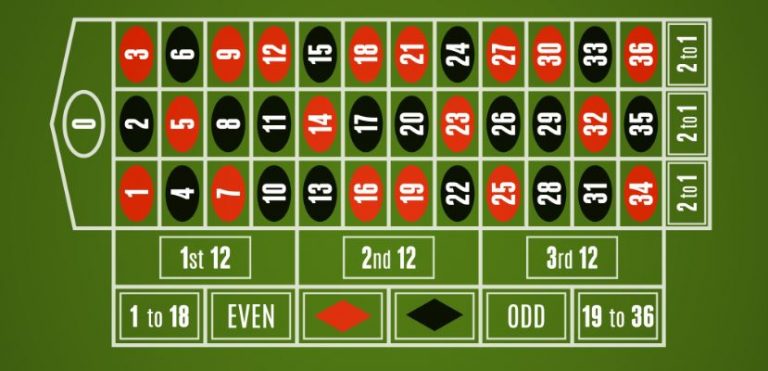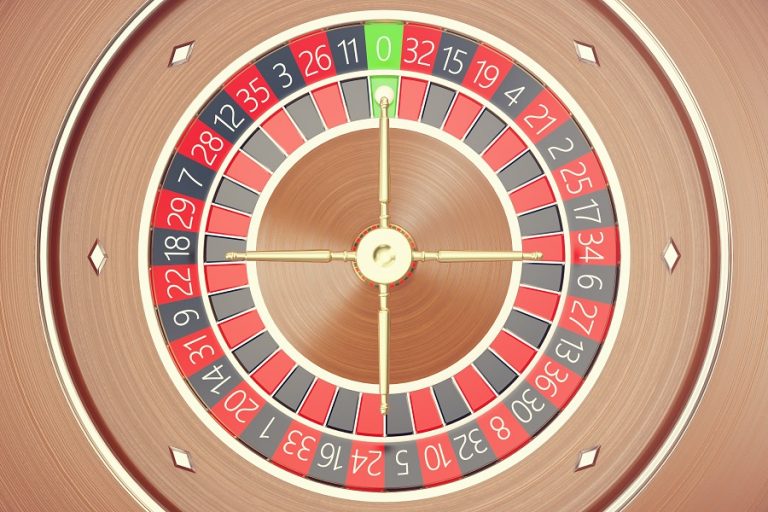How to Play Roulette: Rules, Odds and Payouts
Roulette can be intimidating – we know. The table is complicated enough at first glance, and then there’s the wheel – a pretty bulky and specialized piece of gambling equipment that we know from movies about high rollers, James Bond, mafia bosses and other fantastic subjects. Most of which we can’t seem to identify with.
But what if we told you that roulette is actually easy to learn and fun? It’s also a pretty amazing spectator sport – so if you have found yourself longingly looking at the crowds surrounding roulette tables in brick-and-mortar casinos, or have looked with curiosity at all the “live roulette” options in an online casino, take a look on how to start your first roulette game without stressing out about it.
Roulette for Beginners -Simple Rules
Roulette Chips
Firstly, you will need to get yourself a set of roulette chips from the dealer – if you’re playing in a brick and mortar casino, that is. Why aren’t your normal casino chips fine?
Because your chips are going to be mingling with other players’ chips on the same table, it gets crowded. You need to be able to distinguish your chips from other people’s chips at a glance, and the chips you’re going to get from the roulette croupier are going to be in “your” personal colour, like this:

The Roulette Table
Let’s take a look at that table first, and take some of the confusion out of it. Here, you have your standard European roulette table setup. It’s “European” because it ahs one zero at the top.

There are two kinds of roulette tables you’re going to see at any type of casino – online of real life. The European roulette and the American roulette. There’s also French roulette which plays on the European type of table.
The European roulette has the better odds, simply because it has fewer numbers – only one “0” pocket on the wheel – the “0” loses in a lot of o instances, and American roulette has lower odds and a higher chance of losing and landing on a “0” or “00”.
So why is American roulette still with us, one might ask? The people of North America have gotten so used to this form of roulette that it’s the only one that “seems” right – and we all know what gut feelings do to gamblers, don’t we?
Another important factor in why American roulette is still very much out there is that casinos like it – it gives them a bigger house edge, plain and simple. Why ruin something that puts the odds just a little more in your favour?
The bets here are separated into “outside bets” and “inside bets”. If you’re a beginner, let’s begin with outside bets – they have the best odds, and are very simple.
Outside Bets
We’ll begin with explaining outside bets, because they are perfect for beginners, and have the best odds. First of all, when you look at the whole table, you need to understand that it’s divided into two sections – the inside bets and the outside bets.
The outside bets are located on the bottom. Here they are:

1st 12 – here you can bet on the first 12 numbers (as the roulette wheel has 36 pockets, these “classes of bets” simply divide the roulette wheel into thirds). The payout is 2 to 1 and the odds are at 32.40% for European roulette and 31.6% for American roulette.
2nd 12 – same as the first except the second third of the roulette wheel. The payout remains at 2 to 1 and the odds are at 32.40% for European roulette and 31.6% for American roulette.
3rd 12 – and the final 12 numbers of the wheel with the payout at 2 to 1 and the odds are at 32.40% for European roulette and 31.6% for American roulette.
1 to 18 – this is a bet that basically divides the numbers on the roulette wheel in half – here, you bet on the first half of the wheel or the first 18 numbers. This is called a “low to high” bet, and this is the “low”. The payout is 1 to 1 and the odds are 48.6% European roulette and 47.4% for American roulette.
EVEN – all numbers on the wheel that is even. The payout is 1 to 1 and the odds are 48.6% European roulette and 47.4% for American roulette.
RED – again, this is a “half of the wheel” bet, where you win if the ball lands on red.
BLACK – same as above, but you win when the ball lands on a black pocket. The payout is 1 to 1 and the odds are 48.6% European roulette and 47.4% for American roulette.
ODD – betting on only the odd numbers will get you a payout of 1 to 1 and the odds are 48.6% European roulette and 47.4% for American roulette.
19 to 36 – second half of the numbers of the wheel – this time, 19 to 36. The payout is 1 to 1 and the odds are 48.6% European roulette and 47.4% for American roulette.
As you can see, the odds are pretty good when betting on the outside – you can also mix it up by placing multiple bets – if you bet on odd numbers, black, and 1 to 18, and the ball will land on a black 13 – then you’re in the money because you won three bets with only one lucky number.
In fact, you could have won that bet with numbers both 13 and 11.
Inside Bets
When it comes to the more complicated and hard to win aspects of the roulette game, this is what’s in store for you: inside bets! Inside bets really add some spice to the game – they are the ones that will make you stand up and scream when you happen to get that one number right, and the ball lands in the pocket. To get a straight shot like that doesn’t happen often, and there are other ways of betting on inside numbers that will up your chances a little bit:
Straight up – this is a very difficult bet and it pays 35 to 1. So if you actually win – you’re very lucky indeed. The odds are lower for American roulette because of the “00” pocket, but it still pays out 35:1 – a bit of a disappointment.
Split bet – you can actually split your bet by putting your chip on a line in between two numbers.
Street bet -this covers three numbers, and to place it outside of the row of the three numbers you want to bet on. If you win, you’ll get paid 11 to 1. Not bad!
Five-number bet – in American roulette, this is 0, 00, 1,2,3 – it’s placed by putting your chip in the corner between 0 and 1. This isn’t possible in European roulette – the bet pays out 6 t o1.
Corner bet– you can also put your bet on the “cross” that is in between four numbers. This way, your bet is split into fours. If you put a 20 dollar chip in between 4 numbers, it’s like you put 5 dollars on each of them.
As you can see, betting inside is a bit riskier, but gambling is risky. You can balance your betting by placing one outside bet you are more likely to win and celebrate, and putting your money on some of the riskier but also more exciting games.
Lucky 17
The number 17 comes with some interesting baggage – and while it’s up to you to decide if you’re going to bet on it, here are some fascinating facts and history.
First of all, some of the most famous roulette wins were on the number 17. Sir Sean Connery, of then James Bond fame, won on this number not once, not twice, but three times in a row before walking away. Of course, he lost a few times before then too! But it is considered to be one of the most famous and gutsy roulette wins in history.
Another famous 17 roulette win was made by Mike Ashley – the owner of Newcastle United Football Club. He won 1.3 million GPB in a single spin when he bet on this lucky number.
Some gamblers like to keep one lucky chip on the number 17 “just in case” and hope that the odds come up in their favour.
The number 17 is called “the least random number” by MIT. This comes from an actual clinical study that had people choose a random number from 1 to 20. It turned out that 17 was the most likely number, statistically, to come up In this study.
But this doesn’t mean that 17 has the best odds in roulette – after all, a roulette ball doesn’t think as a human does and it is ruled by completely different laws. The odds will be the same for any number to come up during the spin – unless of course, the wheel is out of balance and you clearly see that certain numbers are coming up more than others. This was known to be the case in some historical roulette stories, but it’s almost never the case in real life.

Inventing the Wheel
The roulette wheel itself has an interesting background. It wasn’t invented as a tool for a gambling game at all, but rather an invention that tried to accomplish something very ambitious – namely, perpetual motion.
If you have been to math class somewhere around the time of fourth grade and remember what your teacher taught you there – you might remember Blaise Pascal, of the Pascal Triangle. Now, this physicist and inventor was also a renown mathematician, and his many inventions and experiments have left a mark on math, science and – well- gambling as well.
Since he was trying to invent a perpetual motion machine, it was crucial that the wheel would spin on forever after it was put in motion. According to the now accepted laws of physics, this is pretty much impossible – but in 1655, people were still dreaming about it. An invention like that would surely change the trajectory of human history forever.
It was a lofty goal and it accomplished a very smooth spinning wheel indeed. Roulette was born soon after – with it’s red or black pockets, and betting table.
The zero was added only in 1842, in a game invented for King Charles III of Monaco. You see, the ruling classes always gambled quite a bit. Charles took it a step further by establishing the famous Casino de Monte Carlo. The casino was founded to raise money for the tiny kingdom that was in desperate need of funding and friends. The zero added more to the house edge and allowed King Charles to cash in on his investment.
Today, the society that runs and owns the Monte Carlo Casino, the Opera de Monte Carlo, and the Hotel de Paris in Monte Carlo is known as the Societe des Bains de met de Monaco.
Roulette came to Canada and the rest of North America in the 1800s. This was a huge boom time on the continent, as people were flocking to invest in newly available land and the multiple gold rushes that happened across the continent. Along with the gold rush came a gambling rush, and another zero was added to up the house edge. As we can see, rules change and the house edge shifts across history.
Famous Wins
Ashley Revell (not to be confused with Mike Ashley) is probably the most talked-about roulette win because it was so gutsy and brazen. Ashley Revell spent his time selling everything he owned and saving money – he had a dream of going to Vegas and putting it all in one bet.
This is not recommended for anyone of course, and it might have ended very badly for young Ashley. He did win that night – and he bet 135,000 USD of his hard saved money. In a matter of seconds, he doubled his whole life savings to almost 300,00$.
Of course, few people know that he had to get special permission from the casino to do this – there are betting limits at roulette tables (and most other table games – these are the rules). Crazy gambling stakes are discouraged, although they are adrenaline-filled and incredible to watch.
On the night of his big gamble, there were amazing crowds watching him place his bet. A special table has been set up for him. No – this was anything from ordinary!
Ashley Revell is English – he travelled to Las Vegas to place his bet in the Plaza Hotel & Casino when he was only 32 years old. He returned to the casino in 2019 to place a ceremonial bet at the Plaza’s new roulette table – the only one with a European betting system, and a single “0”.
When it comes to betting in roulette, it’s good to gamble big. You gamble big you win big. Of course, you have to keep in mind that you can also lose bit. The whole point of gambling isn’t to win and never have to work again – it’s to experience the thrill and the unknown – what will happen when the wheel comes to a stop?
Another famous roulette win is a great lesson in bet splitting – and it comes from the Brazilian millionaire Pedro Grendene Bartelle. Pedro won on the number 32 – but he didn’t have on-chip on the number 32 – not at all! That only seems to happen in the movies.
Pedro covered the number 32 as if he were building a fortress behind it.





